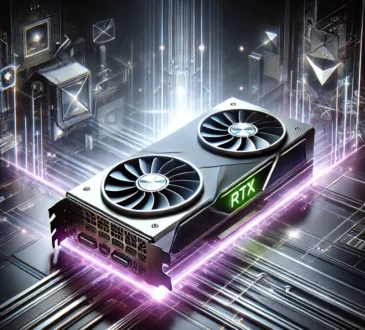The Energy Race: AI Data Centers vs. Bitcoin Mining
Introduction
The rapid expansion of artificial intelligence (AI) and cloud computing, along with the rise of Bitcoin mining, has led to an unprecedented surge in energy consumption. Both technologies are demanding increasingly large amounts of power, raising concerns about their environmental impact and sustainability. This blog post compares the energy consumption of AI-driven data centers and Bitcoin mining, analyzes their growth trajectories, and explores what the future holds for both sectors.
Energy Consumption of AI and Cloud Computing Data Centers
Over the past decade, data centers have become integral to the digital economy, hosting servers that power applications for businesses and consumers. The advent of AI has further amplified their energy requirements. Developers report that individual data center campuses may soon require over a gigawatt of power—equivalent to the annual consumption of approximately 700,000 homes or a city of 1.8 million people. This surge in demand is straining existing utility infrastructures and complicating the search for suitable land for new facilities.
Ali Fenn, president of Lancium, a company specializing in securing land and power for data centers, emphasizes that technology companies are in a “race of a lifetime to global dominance” in AI. She notes that this competition is about national and economic security, with companies willing to invest significant capital to stay ahead. However, the challenge lies in sourcing sufficient energy to keep pace with this expansion.
Energy Consumption of Bitcoin Mining
Bitcoin mining, the process of validating transactions and securing the Bitcoin network, is inherently energy-intensive due to its reliance on the proof-of-work consensus mechanism. As of early 2024, estimates indicate that Bitcoin mining consumes between 80 to 170 terawatt-hours (TWh) annually, accounting for approximately 0.6% to 2.3% of U.S. electricity consumption. This level of consumption is comparable to the annual electricity usage of entire countries, such as Argentina.
The environmental impact of Bitcoin mining is significant. A report published in October 2024 noted that the Bitcoin mining industry emitted 85.89 metric tonnes of carbon dioxide equivalent during the 2020-2021 period, comparable to the emissions from burning 84 billion pounds of coal or operating 190 natural gas-fired power plants.
Comparative Analysis
Both AI-driven data centers and Bitcoin mining operations are substantial energy consumers, each with unique challenges and implications:
- Scale of Consumption: While individual data centers may soon require over a gigawatt of power, Bitcoin mining’s total consumption ranges between 80 to 170 TWh annually. Both are comparable to the electricity usage of entire countries.
- Growth Trajectory: The energy demands of AI and cloud computing are expected to continue rising as these technologies become more integrated into daily life. Similarly, Bitcoin mining’s energy consumption has grown significantly over the past decade, with projections indicating further increases.
- Environmental Impact: Both sectors contribute substantially to carbon emissions. However, Bitcoin mining’s reliance on fossil fuels has drawn particular scrutiny, leading to regulatory actions in various regions.
Future Outlook
Addressing the energy consumption of both AI-driven data centers and Bitcoin mining requires a multifaceted approach:
- Energy Efficiency: Implementing more energy-efficient technologies and practices can help mitigate consumption. For instance, advancements in cooling systems and server optimization can reduce data center energy use.
- Renewable Energy Integration: Transitioning to renewable energy sources is crucial. Some Bitcoin mining operations are exploring the use of stranded energy from renewable sources to power their activities.
- Regulatory Measures: Governments are increasingly implementing policies to manage the environmental impact of these sectors. For example, Russia has imposed restrictions on cryptocurrency mining in certain regions to prevent power shortages.
- Technological Innovations: Developing less energy-intensive consensus mechanisms for cryptocurrencies and optimizing AI algorithms can contribute to reducing overall energy consumption.
Conclusion
The escalating energy demands of AI-driven data centers and Bitcoin mining present significant challenges. Balancing technological advancement with environmental sustainability will require concerted efforts from industry stakeholders, policymakers, and the global community. Finding innovative ways to reduce energy consumption and transition to cleaner energy sources will be key to mitigating the impact of these technologies on the environment




